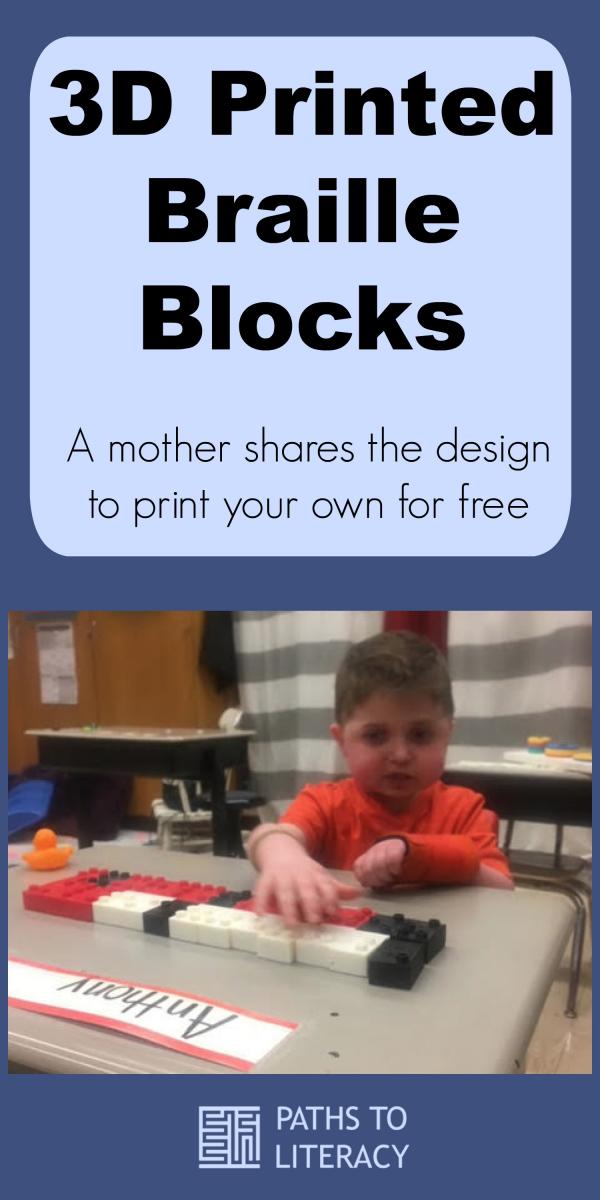3D Printed Braille Blocks
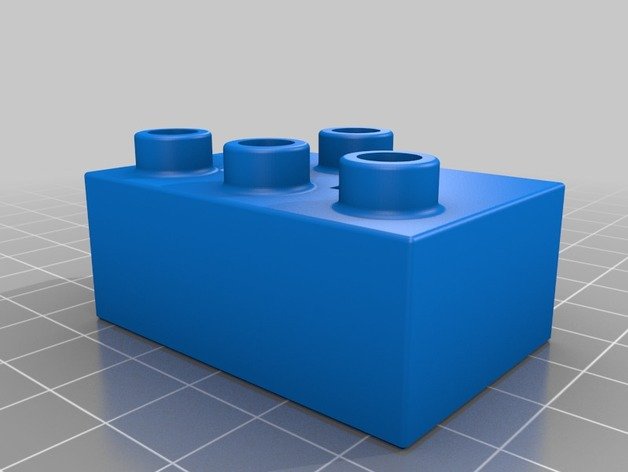 It seems as if braille blocks are the hot topic, thanks to LEGO announcing that they are going to be releasing a braille set. I envisioned this about three years ago and set out on my own to find a way to make it happen. My son, Anthony, is now 7 years old and his favorite thing since he was three years old has been LEGOs and blocks of all kinds. At the age of 2 he was diagnosed with a large brain tumor and had a craniotomy in 2013. The tumor unfortunately took his sight as the optic nerves were damaged beyond repair. After surgery he had a stroke and it has really limited his motor and tactile skills. Of course, for a blind child, this is devastating. Taking all this into consideration I wanted to make braille accessible to him.
It seems as if braille blocks are the hot topic, thanks to LEGO announcing that they are going to be releasing a braille set. I envisioned this about three years ago and set out on my own to find a way to make it happen. My son, Anthony, is now 7 years old and his favorite thing since he was three years old has been LEGOs and blocks of all kinds. At the age of 2 he was diagnosed with a large brain tumor and had a craniotomy in 2013. The tumor unfortunately took his sight as the optic nerves were damaged beyond repair. After surgery he had a stroke and it has really limited his motor and tactile skills. Of course, for a blind child, this is devastating. Taking all this into consideration I wanted to make braille accessible to him.
From Idea to Reality
Anthony and I were sitting in the floor one day, building a tower. I came across a 2x3 LEGO Duplo block and the idea just kind of came to me. I am lucky enough to know Doug Seelbach, who is an engineer, through another project we worked together on for Anthony. He is very proficient with designing things for 3D printers and I knew he was perfect to approach for this concept. When I mentioned my idea to him, he was not only on board, he was very excited to work with me on this.
The more Doug and I talked about this project the more I began to love it and feel the need to push forward. These blocks are perfect for kids ages 2-5 (just like regular Duplos) who are nonreaders, beginning readers, have dexterity and mobility issues, as well as sighted peers and siblings. We talked, of course, about the positioning of the dots during the design, but we also wanted to include the print equivalent so that they were even more inclusive. This encourages all children to use them, as well as helping kids with some limited usable vision, or degenerative disease to learn braille. The most painstaking part of the process was watching Doug measure every minute detail of the 2x3 Duplo I took to him, so that we ensured that the end product would seamlessly fit into a LEGO set.
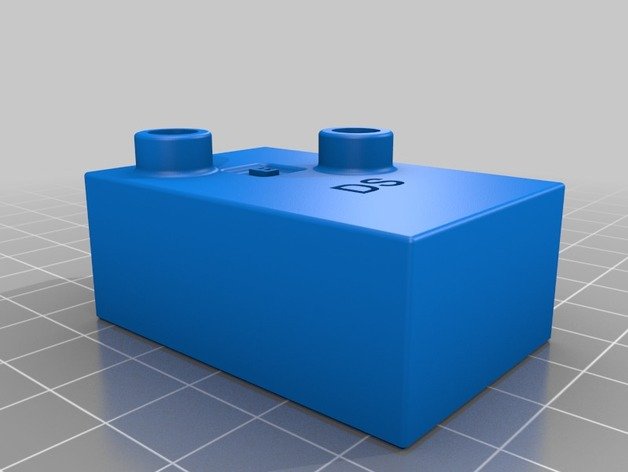 The print equivalent of the letter is toward the top of each block and it is inset in a square. This helps to orient which part of the block is at the top.
The print equivalent of the letter is toward the top of each block and it is inset in a square. This helps to orient which part of the block is at the top.
3D Printing
We decided to make them 3D printer compatible so that teachers, parents, grandparents, whoever, could print them brick by brick so they could choose to print the whole alphabet, a name, multiples of certain letters, or as they were affordable. Not to mention that you could choose to make them all one color, a variety of colors or whatever would be preferred. 3D printers are so accessible now. You can buy a small printer off Amazon for a couple hundred dollars and the uses are endless, which means more people have them at home. And honestly, if you learn the programming, a 3D printer is a cool investment for a visually impaired kid. Many schools are investing in 3D printers as well, UPS stores and other shipping places also have 3D printers that the public can use for a fee.

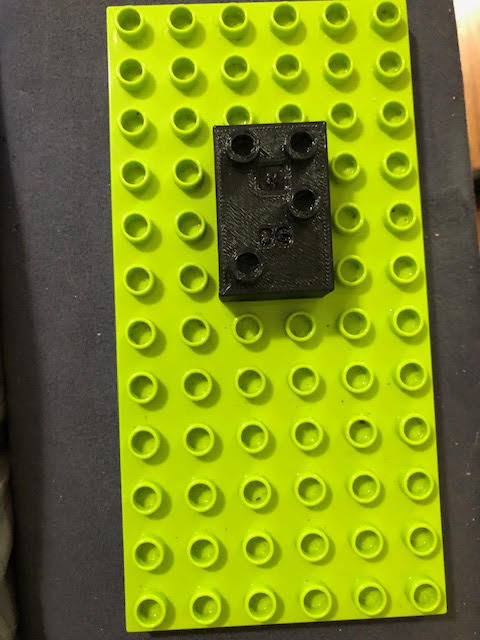
Making Braille More Widely Available to All
Once we were finished, we wanted to make the program accessible to anyone who could benefit from it so we shared the design on thingiverse.com (www.thingiverse.com/thing:2151813). We also approached a local high school with a 3D printer about printing a set for VIPS, our local preschool program for visually impaired children from birth-5 years old.
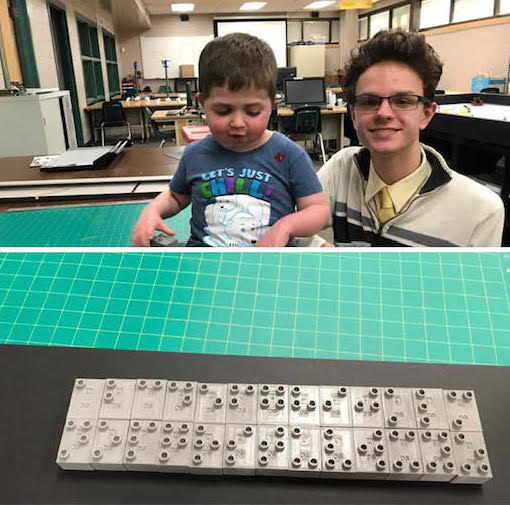
Recently, our state school for the blind got a 3D printer and I am excited for them to print these for their use as well. These are a great tactile alphabet to use when introducing braille to kids in the classroom or at home. Imagine singing the ABCs and being able to put your child’s hand on a block that has the letter A in braille. Children learn through play and need to be exposed to braille as much as possible, just like their sighted peers are exposed to print.
